The Common Law Admission Test (CLAT) is the premier entrance exam for law education in India, conducted by the Consortium of National Law Universities. It is the gateway for aspiring students to gain entry into top law schools, including the National Law Universities across the country, for both undergraduate and postgraduate programs. To perform well in the CLAT exam, taking CLAT mock tests is essential, and one thing that is even more important is your CLAT mock analysis.
For optimal performance in the CLAT, it’s crucial to start taking regular mock tests by September and focus on in-depth mock analysis. This detailed evaluation is essential for uncovering your strengths and weaknesses, which in turn, helps in crafting an effective preparation strategy for the CLAT mock test.

The purpose of CLAT mock analysis is to identify your strengths and weaknesses and to learn the art of skipping questions. The process instructs you on what to attempt, how to approach it, and the optimal timing for each question.
In this article, you will learn how to take CLAT mock tests and the correct way to conduct your mock analysis to excel in your exam.
Also Read: CLAT Preparation Strategy
CLAT Mock Analysis : Background
Your strategy should not be based on your current level, but on common occurrences. CLAT mock analysis is the ideal way to improve your skills and ensure you fully utilize it. CLAT mock tests assess your knowledge, while the analysis helps you identify your strengths and weaknesses. It’s important to take full advantage of this.
It also aids in reducing your mistakes. Often, you may make errors without realizing it; mock analysis helps you become aware of and understand these mistakes.
Questions Asked by Students
While discussing CLAT mock analysis, let’s examine some questions frequently asked by students about CLAT mock tests.
- How much time should be devoted to CLAT mock analysis?
- Which section is more important for mock analysis?
- Is it necessary to have the paper checked by someone else?
- How many CLAT mock tests per day are necessary?
- How should one conduct CLAT mock analysis?
- Which section is more important in CLAT mock tests?
- What is the best way to conduct CLAT mock analysis?
These are some frequently asked questions about CLAT mock tests. In this article, we will address all these questions, and all your doubts related to CLAT mock tests will be clarified.
CLAT Mock Analysis: Maintaining a Record Book
You should keep a book to record the date of each CLAT mock test, its number or name, and your rank or marks. Also, note down the topics where you made significant errors or need more clarity. Update this book after every CLAT mock test and regularly review it to understand which mistakes to avoid. Let’s explore step by step how and what to write in the notebook. By using this method, you can efficiently conduct your CLAT mock analysis.
STEP 1
After completing a CLAT mock test, record the mock details and your learnings from it. Include information such as the total time you spent, any extra unnecessary time spent, topics you hadn’t covered but appeared in the test, distractions faced during the test, and other small yet significant details related to your CLAT mock test.Writing this in your analysis notebook will help you stay focused and clarify what and how to concentrate on your studies.
STEP 2
Record your rank, score, negative marks, and sectional scores for each CLAT mock test. Write your analysis thoroughly. After every five mocks, review what you have written to analyze your progress. Make it a habit to assess your performance and learnings after every set of five CLAT mocks to monitor your improvement. This approach to your analysis will help you gain a deeper understanding of your mistakes.
STEP 3
Write short notes on topics that could reappear in your next CLAT mock test or the actual CLAT examination. This primarily involves factual information, such as current affairs, vocabulary, static GK, concepts of legal reasoning, a list of legal terms, and other factual data. Check the mock analysis notebook after every 2 days and revise.
STEP 4
Ask Yourself ‘Why’. Ask questions like “Why was I distracted?”, “Why are my attempts not increasing?”, “Why am I not improving in certain sections?”, and “What mistakes am I repeating, and how can I overcome them?” Start questioning yourself; by acknowledging these questions, you solve 50 percent of the problem, and then you can work on finding solutions. Writing this in your CLAT mock analysis notebook will help you stay motivated.
CLAT 2025 Study COMMUNITY
Prepare with Ex CLAT Toppers
CLAT Mock Analysis Strategies
Understanding CLAT mock tests is key to preparing for the exam. Let’s explore how to carry out a mock analysis effectively, in a way that’s relatable and practical.
1) For Correct Answers
While conducting your CLAT mock analysis, it is important to review your correct answers as well as your incorrect ones. Both are equally important in the review process.
In your analysis, it’s crucial to review both the questions you answered correctly and those you didn’t. Assess whether your correct answers stemmed from understanding or mere guesswork. It’s beneficial to revisit how you arrived at the answers to ensure your reasoning was sound. Even if your answer was right, if the reasoning was flawed, note that for improvement. Discovering a faster solution than your initial approach is a valuable insight to carry forward.
Monitoring the time you spend on each question is also vital. If you’re slower than average, it might indicate a need for further study in that area. Additionally, when you correctly answer questions on unfamiliar topics, jot them down for extra practice to enhance your proficiency in those areas.
Improving in these specific areas can enhance your overall performance. Consistent practice with mock tests is essential, as it helps you become familiar with the exam format and question types.
Ultimately, CLAT mock analysis is about continuous improvement and maximizing the effectiveness of your study sessions.
2) For Incorrect Answers
In analyzing your CLAT mock tests, paying attention to the wrong answers is essential. It’s like holding up a mirror to your mistakes, showing you where to focus your efforts to get better.
Watch out for the simple errors, such as rushing through questions or not reading them thoroughly. Spotting and reducing these errors can make a big difference in your next mock test.
Be on the lookout for unfamiliar question types. If you encounter something new, jot it down and tackle about 20 similar questions to master it. Avoid spending too much time on extremely difficult questions that most people skip. If it’s consuming too much time and you’re unsure, it’s better to move on.
Pay extra attention to questions involving calculations, as they are prone to slips. Strive for both speed and accuracy in your calculations. If you’re making mistakes because you’re rusty on the topics, make it a point to review the material regularly, at least once a week, to keep it fresh in your mind.
Comparing your question-solving speed with others can also be insightful. If you find others are faster and more accurate, try to understand their strategies and improve your speed while maintaining accuracy. Remember, consistent practice is key to improving your time management and accuracy in the exam.
Approaching your CLAT mock analysis in this manner, especially focusing on the questions you got wrong, will pave the way for better scores in your subsequent CLAT mocks. It’s about making each practice session count and turning weaknesses into strengths.
3) For Skipped Questions
When you look at your mock tests, pay attention to the questions you didn’t answer. Understanding why you skipped them is important for your analysis.
If a question looks strange or not related, it’s okay to skip it. Learning which questions to skip is a skill you’ll get better at. If you see that a question is mostly skipped and doesn’t seem right, it’s better to leave it and save time.
However, if you’re skipping a question that many others have tried, it might mean you need to study that topic more. Go back and practice around 30 questions on that topic to get better at it.
Focusing on the questions you skipped can help improve your score. It helps you learn from your choices in the test. This approach to CLAT mock analysis will help you address the questions you skipped.
Also Read: CLAT Legal Reasoning
Also Read: CLAT Logical Reasoning
Also Read: CLAT GK
CLAT Mock Sample Papers
Let’s discuss the CLAT mock analysis by examining the types of questions that appear in the exam.
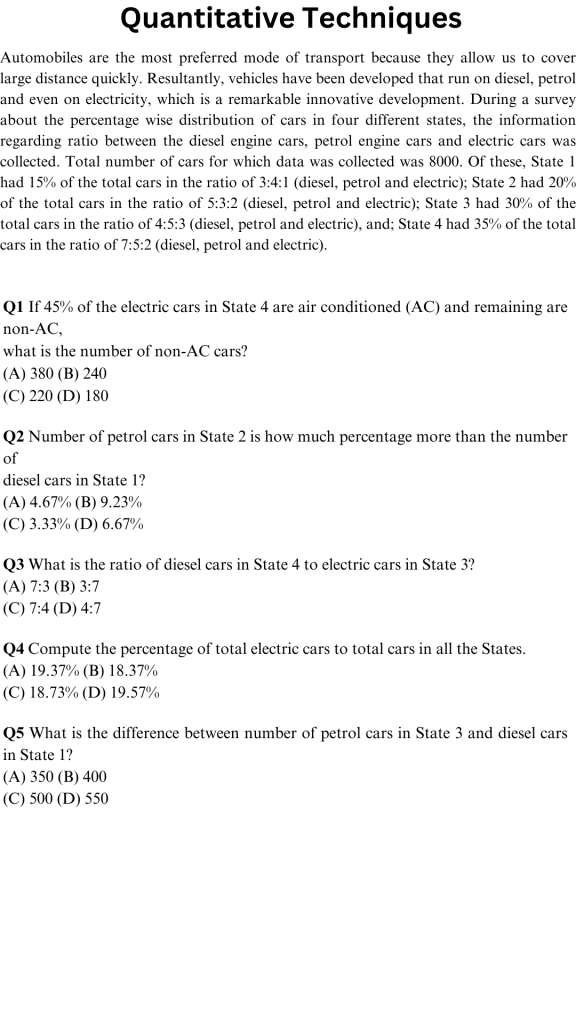
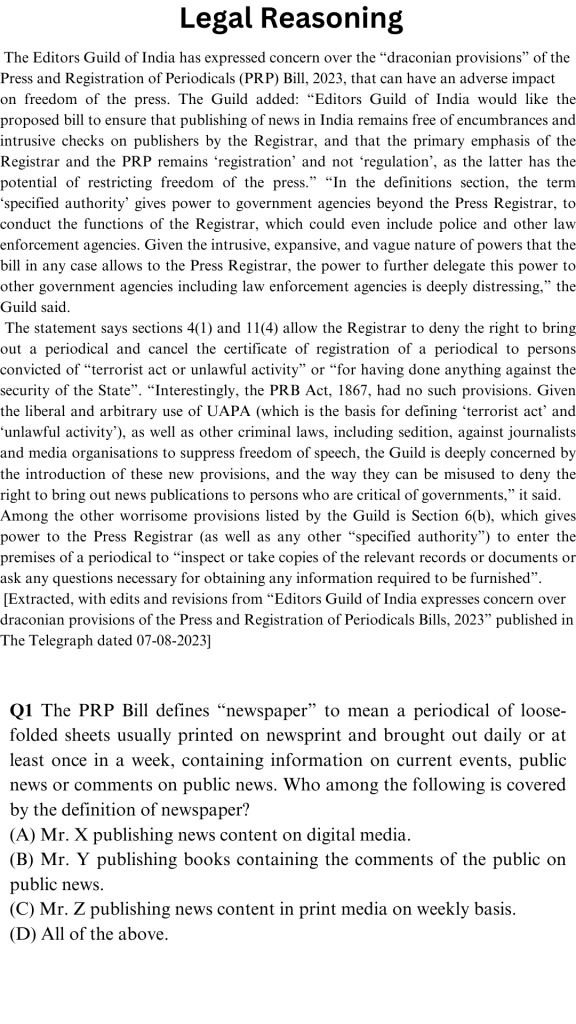
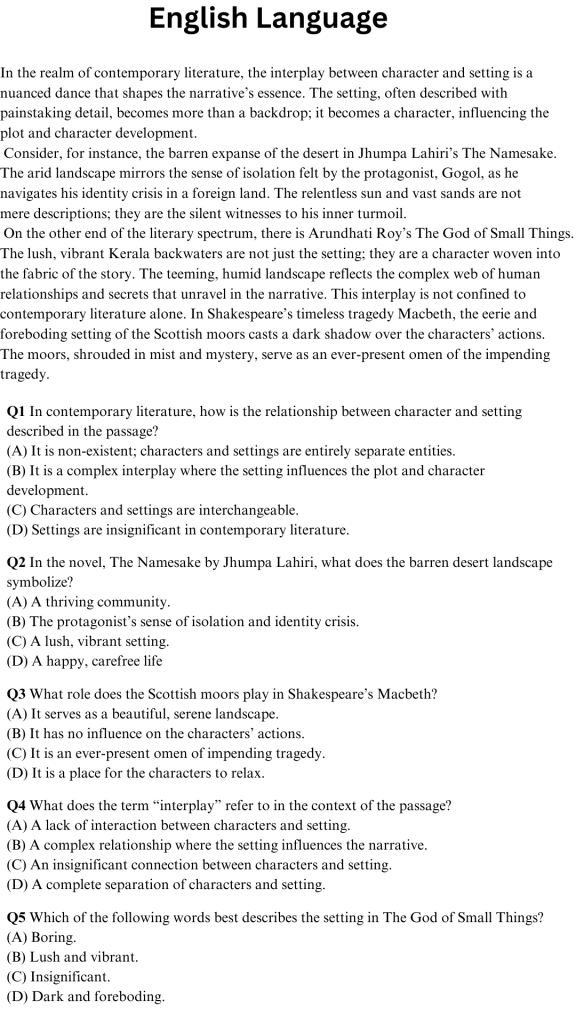
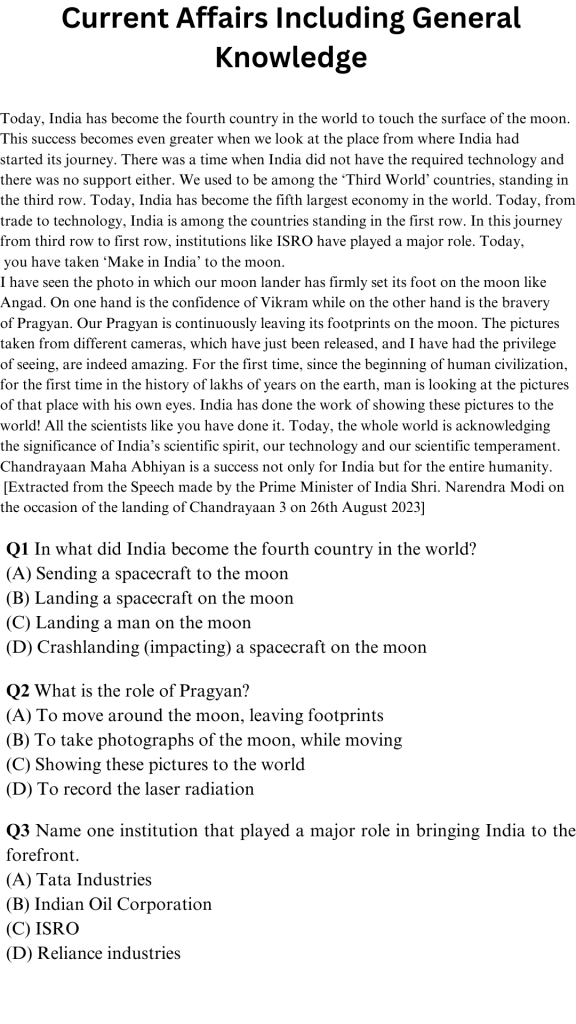
Attempt these questions to gain an understanding of what to expect. This will also assist you in your analysis later on.
AI Based CLAT Mock Analysis
iQuanta offers the top CLAT mock test analysis platform. Here are the reasons why iQuanta delivers the best materials.
Mock tests are the best way to see how ready you are for the CLAT. They help you find out what you’re good at and what you need to work on. In this article, we look at iQuanta’s CLAT Mock Series, which students say are the best mocks for CLAT.
Every part of the exam has its own mock tests. With enough practice, you can score high.
During the mock tests, if you’re stuck on a question, you can get help anytime as there’s 24/7 support to clear your doubts. These mocks are designed to mimic the real exam closely, ensuring you face no surprises on the actual test day.
iQuanta offers an innovative AI tool that analyzes your performance on mock tests and highlights the areas you need to focus on. This tool simplifies your study process by pinpointing where you need improvement, saving you the trouble of figuring it out on your own.
This mock analysis tool by iQuanta can be a game-changer in understanding your weak points and boosting your exam scores.
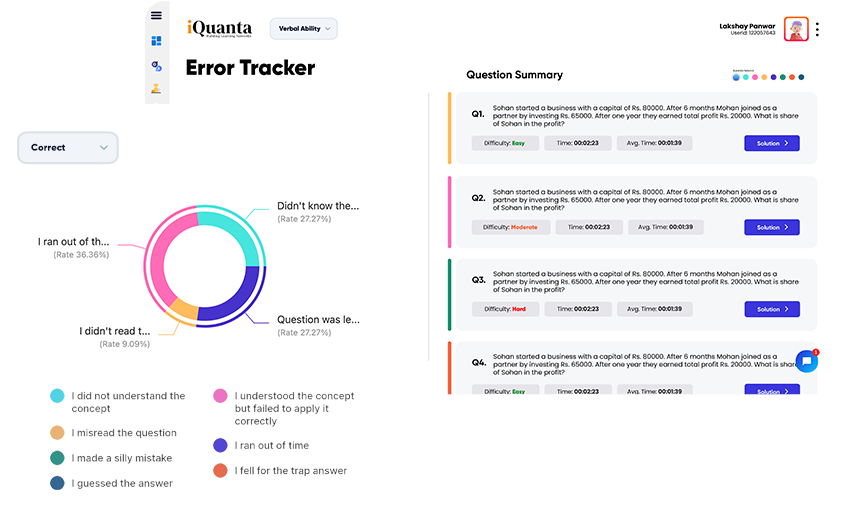
Here, you can see how in-depth your CLAT mock analysis will be done.
CLAT Mock Analysis Tips and Strategies
When talking about CLAT mock analysis, let’s explore some tips and tricks to help you excel in both your CLAT mock tests and the final exam.
1) Take Risks
Additionally, taking more risks in mocks can help you develop a mindset to handle challenging questions with ease and adaptability. This strategy can lead to improved performance in the actual exam by enabling you to tackle unexpected questions more effectively.
2) Start Early
Try to complete your syllabus as soon as possible and take as many CLAT mock tests as you can. This will help you become familiar with the exam pattern, and you may encounter repetitive concepts or questions, which will aid in remembering them
3) Start Taking Interest
Take CLAT mock exams with full concentration and interest. Also, engage actively in mock analysis. The more interested you are, the better you will perform in the mocks and the actual exam.
4) Revision
Revision is crucial. Even if you are scoring well in mocks, don’t become overconfident; revise daily. Attempt the questions you didn’t try in the mock test and review the factual ones that are likely to appear in the exam.
Follow this advice; it will surely help you understand how to conduct an effective CLAT mock analysis. CLAT mock analysis is a crucial part of the preparation process.




